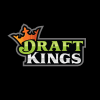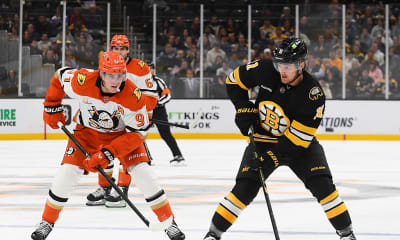Your Guide to the NHL 2025/26: Metropolitan Division

Current bets
The question is what we should really expect from the Metropolitan this season. Some teams carry genuine championship ambitions, others mostly question marks – and the gap between hope and despair could become brutal once 82 games are in the books.
Have you seen my breakdown of the Atlantic Division?
Below you’ll find answers to the most common questions heading into the season – from when the puck drops to who’s favored to lift the Cup.
How have your betting tips performed in previous seasons?
I have a long track record of documented betting records that have always been public and accessible. That will also be the case this year. Last season my focus was more on a private group, which meant fewer plays were posted publicly on social media. But now I’m back with tips as before – mainly high-limit bets on game days, occasionally spiced up with a prop when the right spot comes along.
- NHL High Limit (2021/22–2023/24): 1,335 bets, +7.32% ROI
When does the NHL 2025/26 season start and end?
The 2025/26 NHL season begins on October 7, 2025, and the regular season ends on April 16, 2026. After that, the Stanley Cup Playoffs take over, running as usual well into June.
In the middle of the season, Olympic hockey in Milan 2026 will be played, scheduled for February 8–22, 2026. The NHL will make an official break during these weeks, meaning league play pauses while the world’s best players suit up for their national teams. This marks the first time since Sochi 2014 that NHL players participate in a Winter Olympics, making the season extra special—with an intense schedule before the break and a packed finish afterward.
How do divisions and conferences work?
The NHL is divided into two conferences: the Eastern Conference and the Western Conference. Each conference is further split into two divisions.
Eastern Conference
Atlantic Division
Metropolitan Division
Western Conference
Central Division
Pacific Division
Each division contains eight teams, meaning both the Eastern and Western Conference consist of 16 teams each.
When it comes to the playoffs, the top three teams in each division qualify automatically. In addition, there are two so-called wild card spots in each conference. These go to the two teams with the highest number of points in the regular season that did not already qualify via a top-three finish in their division.
This means the distribution is not always exactly even between the divisions. Sometimes one division can send as many as five teams to the playoffs while the other only gets three. This system ensures that the best teams in the conference as a whole are rewarded—not just the ones within a particular division.
Who won the Stanley Cup last season?
The Florida Panthers were crowned champions in 2025 after defeating the Edmonton Oilers 4–2 in the Final series. In the decisive Game 6, the Panthers cruised to a 5–1 victory in front of their home crowd.
Sam Bennett was named Playoff MVP after a spectacular postseason with 15 goals, while Sam Reinhart delivered a historic performance in the Final by scoring four goals in a single game—something that hadn’t happened in a Stanley Cup Final since 1957.
It was the Panthers’ second straight title and their third consecutive Stanley Cup Final appearance.
Who are the favorites this season?
Heading into this season, the Florida Panthers are once again the favorites according to the betting odds—and it’s hard to argue against that. The team has reached three straight Stanley Cup Finals, winning two of them, and still has a core of players who know exactly what it takes to go all the way.
But the competition is fierce. The Edmonton Oilers, Carolina Hurricanes, Colorado Avalanche, Dallas Stars, Vegas Golden Knights, and Tampa Bay Lightning are all legitimate contenders capable of challenging the Panthers for the title.
1.
 Carolina Hurricanes – Ehlers Could Be the Missing Piece That Changes Everything
Carolina Hurricanes – Ehlers Could Be the Missing Piece That Changes Everything
For several years, the Carolina Hurricanes have been the definition of a team that’s always in the mix, always playing top hockey, but never managing to go all the way. Conference Finals have become something of a trademark, but the Stanley Cup has always felt one step out of reach. The question heading into 2025/26 is whether this finally could be the year – and much of that answer might be spelled N-i-k-o-l-a-j E-h-l-e-r-s.
The Danish speedster has long been one of the league’s most underrated players in Winnipeg, but in Carolina he might finally get the role he’s always deserved. If Brind’Amour gives him top-line minutes alongside Sebastian Aho and Seth Jarvis, there’s real potential to talk about one of the best lines in the league. Aho is the brain, Jarvis the motor – and with Ehlers’ speed and creativity, the Canes gain the extra dimension they’ve lacked when games get toughest.
The Danish speedster has long been one of the league’s most underrated players in Winnipeg, but in Carolina he might finally get the role he’s always deserved.
Behind the stars, there’s also depth. Andrei Svechnikov still has more to give, Logan Stankoven looks like a future star who fits Carolina well, and Jordan Staal continues to be that driving force on the third line. The offense looks deeper than it has in a long time – and not just on paper. This is a team that can push opponents back with four lines, night after night.
On defense, Jaccob Slavin remains one of the league’s best shutdown blueliners, and now he’s joined by K’Andre Miller – a player who never reached his full potential with the Rangers but feels tailor-made for Carolina’s system. Add in the talented Alexander Nikishin and puck-mover Shayne Gostisbehere, and the blue line looks both mobile and strong. The only question is whether anyone can replace the experience Brent Burns took with him – otherwise, there’s not much to complain about.
And in goal? Well, that’s where the question marks linger. Frederik Andersen is injury-prone, Pyotr Kochetkov hasn’t proven he’s ready to be a true No. 1, and there’s a lingering sense Carolina might need to reinforce between the pipes if they want a truly long spring.
But the overall impression? Carolina looks more exciting than they have in years and extremely well-balanced. Ehlers is the addition that could change everything – and if he elevates the top line to the level many expect, there’s no reason to think the Hurricanes can’t win both the division and the conference. And maybe, just maybe, it’s finally time to go all the way – the roster is certainly good enough to contend.


2.
 New Jersey Devils – Must Avoid Injuries
New Jersey Devils – Must Avoid Injuries
The New Jersey Devils took a relatively quiet approach this summer. No big changes, but maybe that’s exactly the right path. After last season fell apart when both Jack Hughes and Jacob Markström struggled with injuries, 2025/26 is more about staying healthy than chasing headlines. If Hughes can play a full season and Markström performs at a normal level in goal, the Devils suddenly look like one of the most stable teams in the Metro.
Up front, the talent is already in place. Hughes is the team’s offensive engine, Jesper Bratt complements him with skillful hands, and Nico Hischier ties the lines together with his two-way play. Timo Meier adds size and scoring, but there’s still the sense that the Devils are missing one more top-six winger to match the very best. Connor Brown and Evgenii Dadonov are experienced signings who can fill holes in the lineup, but they don’t change the big picture. A true top addition would push everyone else down a spot and give the Devils the deeper forward hierarchy needed to become a real Cup favorite.
On defense, things look far more solid. Luke Hughes took big steps last season and is already challenging Dougie Hamilton for the top power-play role. Brett Pesce does his usual job as the glue, Jonas Siegenthaler provides steady defense, and Simon Nemec looks ready for bigger minutes. Together, they give the Devils a top-four that can win games on their own when things get tough.
In goal, Markström had a split season – elite before the injury but more human after. With a normal rebound and Jake Allen as a stable partner, there’s potential for far more consistent goaltending. The Devils don’t need a Vezina year here, just enough stability to let their offense carry them.
So what can we expect? Carolina is still the favorite in the Metro, but the Devils have both the speed and structure to stay right behind them and pounce on any slip-up. This is already a team that can threaten in a playoff series, but to move from “dangerous” to actual Cup contenders, they need an upgrade in the top six. If that comes before the deadline – while Hughes and Markström stay healthy – the Devils could easily become a team no one wants to face in the playoffs.
3.
 Washington Capitals – One Foot in the Past, One in the Next Generation
Washington Capitals – One Foot in the Past, One in the Next Generation
Heading into last season, the consensus was that the Washington Capitals had made a series of smart moves that at least gave them a chance to compete for the playoffs. But the question marks were many. The year before, they had made the playoffs via a wildcard spot despite a –37 goal differential, and it was far from clear that their roster shuffle would change that picture. On top of it all, the spotlight was squarely on Alex Ovechkin and his chase for Wayne Gretzky’s immortal goal record – a pursuit that risked overshadowing team performance.
But the Capitals exceeded all expectations. Not only did they put together a far more stable unit and secure 111 points – second-best in the league – but Ovechkin also broke the long-awaited record. The fact that it’s now behind him could be a blessing. He no longer needs to focus as much on waiting for easy empty-net goals, something that at times seemed more important than defensive responsibility in critical moments. Whether he would admit that is another matter.
A key to their success was Logan Thompson in goal. He delivered consistency all year and gave the Caps the stability they’d long lacked in net. That Washington got him in a trade from Vegas for just two third-round picks makes it one of the best deals in recent memory. Thompson quickly proved to be more than a steal – he became one of the league’s most reliable goalies and a central piece of Washington’s rise.
Now the question is what comes next. Can the Caps really repeat last year’s success, or was it one of those seasons where everything just clicked? The truth likely lies somewhere in between. The team has a strong foundation with reliable names like Alex Ovechkin, Pierre-Luc Dubois, Tom Wilson, and Dylan Strome, while the depth ensures they rarely collapse.
Can the Caps really repeat last year’s success, or was it one of those seasons where everything just clicked?
The most exciting part might actually be further down the lineup. Washington has a talent pool being phased in at just the right time. Ryan Leonard, in particular, looks poised for a bigger role this season. He’s been praised heavily and stands out as an obvious part of the Caps’ future – though it’s wise not to expect too much too soon. Hendrix Lapierre and Andrew Cristall are more uncertain, but both are in the wings and could gradually grow into NHL roles. That allows Washington to let its youngsters develop at a reasonable pace in a functioning lineup, rather than forcing breakthroughs too early.
Meanwhile, club icon Alex Ovechkin enters what could very well be his last NHL season. He just turned 40, and the fact that he still scored 44 goals in just 65 games last year is an almost unbelievable testament to his greatness. No other player defines the Capitals’ history the way he does, and his presence continues to give the team both identity and respect, even as the generational shift begins in earnest.
The Capitals are a team with a stable foundation where clear structure, roster depth, and Logan Thompson as a steady last line of defense point toward another playoff appearance. But to take the next step, one of their young talents needs a true breakout – or the team must add more star power from the outside. They absolutely have the chance to surprise again, but expecting a better season than last year would be asking too much.
4.
 New York Rangers – From Free Fall to a Chance at Redemption
New York Rangers – From Free Fall to a Chance at Redemption
The New York Rangers are coming off a season that can best be described as a free fall. Going from Presidents’ Trophy winners to missing the playoffs in a single year says everything about how badly things went. The roster was shaken up heavily during the winter. Jacob Trouba, Chris Kreider, K’Andre Miller, Kaapo Kakko, and several other major names disappeared in a short span. What remains is a group that still contains star power but also feels more vulnerable than it has in a long time.
Up front there are still plenty of question marks. Artemi Panarin didn’t reach the level he had the year before, Alexis Lafrenière regressed after his breakout, and Mika Zibanejad delivered one of his weakest seasons in a Rangers jersey ever. The only one who truly managed to breathe life into the offense after the trade from Vancouver was J.T. Miller, and now he steps in as captain with a heavy responsibility to lead the team back to the playoffs. Will Cuylle was one of the few bright spots, with 20 goals in a more understated role, and he now gets the chance to take over Kreider’s spot in the top six – a responsibility he doesn’t seem entirely unfitted for.
At the same time, it’s worth remembering the Rangers actually looked better toward the end of the season. When the turbulence subsided and players started to find their roles again, there were stretches where the play looked more cohesive. Perhaps those months when everything fell apart were more of a dark interlude than a new normal. It’s still a long way from the level they had during the Presidents’ Trophy season, but there’s a sense that the bottom has been reached and the road back has begun.
The defense has received a much-needed lift. Adam Fox remains the Rangers’ driving force on the blue line, and now he’s joined by Vladislav Gavrikov, a pure shutdown defender who can stabilize a back end that collapsed last season. That’s needed, because behind Fox and Gavrikov the depth isn’t as secure – Carson Soucy and Will Borgen are slated for bigger roles than they might be built for, and young names like Scott Morrow must take quick steps if the defense is to hold.
In goal, Igor Shesterkin remains the Rangers’ biggest trump card. Statistically, he had his weakest season to date, but that was more due to a leaky defense than his own ability. In fact, he was still one of the league’s best goalies when adjusting for the quality of chances he faced. As long as Shesterkin plays at his normal level, the Rangers will have a chance in many games, but there isn’t much to lean on behind him anymore as Jonathan Quick looks ready for retirement.
In goal, Igor Shesterkin remains the Rangers’ biggest trump card.
Perhaps the most intriguing change heading into the season is behind the bench. With Mike Sullivan as the new voice, we’re likely to see a Rangers team that plays with higher speed and intensity – it’s his signature to push the pace and demand hockey that’s in constant motion. But there’s a risk there, too. In Pittsburgh, we saw how his philosophy clashed with an aging core that could no longer keep that tempo. The Rangers’ backbone is younger, but hardly youthful, and the question is whether everyone can truly keep up when the demands increase. If not, even more high-stress nights await Igor Shesterkin in net – exactly the pattern we’ve seen time and again with the Penguins in recent years.
The Rangers are still a good team, and the playoffs feel like a fair expectation. But with thinner forward depth and a blue line that looks weak behind the top pair, it’s far from certain that Sullivan will succeed immediately.
5.
 Columbus Blue Jackets – A Young Core That Inspires Confidence in the Future
Columbus Blue Jackets – A Young Core That Inspires Confidence in the Future
Columbus was one of last season’s most charming teams – not because everything clicked, but because so much clicked at the same time for so many young players. Kent Johnson took a big step, Kirill Marchenko went from intriguing goal-scorer to a key piece, Adam Fantilli increasingly looked like a future top-line center – and above it all stood Zach Werenski, who played at a level where Norris talk didn’t feel the least bit out of place. It was hard not to fall in love with the energy, the tempo, and the sense that something real was being built in Ohio.
This season’s question is less romantic: how much can you actually demand – now? The summer brought a few changes to the roster, but the whole remains largely the same. Charlie Coyle is a clear stabilizer down the middle and a solid pro to lean on, but the price tag feels high and he doesn’t raise the ceiling. Miles Wood adds pace and attitude, Isac Lundeström provides work-rate in the bottom six – but both risk dragging lines down if they’re given too big roles. This is still a team that should grow through internal development rather than flashy summer signings.


The offense will again be the young core’s stage. The trio of Kirill Marchenko, Adam Fantilli, and Kent Johnson can win games on their own, and now there’s also the chance to get a healthy Yegor Chinakov back into the mix. He missed large parts of last season, but when he did play he looked genuinely exciting – a breakout feels close and would inject huge energy into an already promising top six. With Sean Monahan as a steady pivot and Dmitri Voronkov as a wrecking ball, there’s experienced support around them as well. Captain Boone Jenner, who also missed much of the season, will be important to add some grown-up composure and calm when the pressure ramps up on the young core.
On the blue line, Zach Werenski continues to be the obvious leader – and wow, what a season he had last year. Only Cale Makar scored more points among NHL defensemen, and Makar played with MacKinnon & Co. every night.
As a whole, though, the defense remains the team’s biggest question mark. Dante Fabbro is a solid two-way defender who brings real value in his own zone, but he’s a bit alone in that work at times. Columbus allowed far too many chances at five-on-five last season and the penalty kill didn’t measure up. Ivan Provorov logs huge minutes but not always with the best quality, and Erik Gudbranson is neither more nor less than he’s always been. Above all, they lack a truly reliable shutdown pair that can do the job night after night. At the same time, that’s also a consequence of granting the offense lots of freedom – and that was precisely what made the Blue Jackets so entertaining to follow. Who doesn’t want to see the young stars unleash their full offensive capacity? It’s exactly what caught many teams off guard last year.
Between the pipes, Jet Greaves will be the big wildcard. His top level in the spring was a breath of fresh air, but maintaining it over a full season is a different challenge. If he can perform around league average, Columbus has a chance to be in almost every game. But if he wobbles and more responsibility falls to Elvis Merzļikins, the margins shrink quickly.
The playoffs are still a tough goal, but Columbus feels far more interesting than many of the other teams at the bottom. The point total may flatten out somewhat this season, but the development curve still points upward. The young core will take steps, the fans will see the foundation getting sturdier, and the team is building for the future. It might not be enough this year – but the Blue Jackets look increasingly ready to soon enter the playoff race for real.
6.
 New York Islanders – Sorokin Alone Isn’t Enough
New York Islanders – Sorokin Alone Isn’t Enough
The New York Islanders enter the season with the feeling that something’s missing. Noah Dobson is gone and, even if he wasn’t always the most popular player on Long Island, it’s still a heavy loss. You don’t replace a top defenseman who can play twenty-five minutes a night just like that, and even though the young talent Matthew Schaefer could become a key player down the road, it seems unlikely he can fill that void already. The defense simply looks thinner, and that’s a poor starting point in a division where margins are small.
The defense simply looks thinner, and that’s a poor starting point in a division where margins are small
There is, however, a bit of light up front. A healthy Mathew Barzal is practically an addition in itself, and around him the Islanders have brought in names like Jonathan Drouin and Maxim Shabanov. Drouin is of course a gamble, but if his last year in Colorado wasn’t just the product of playing next to MacKinnon, he could be a welcome injection into the top six. Shabanov is an unknown quantity, but his KHL production is hard to ignore, and if he can contribute decently on a third line, the attack suddenly looks deeper than it has in a long time. Emil Heineman won’t make headlines, but he’s still an improvement over last year’s options at the bottom of the hierarchy.
The problem is that it stops there. Bo Horvat is a solid center, Anders Lee and Kyle Palmieri can still contribute, but the Islanders lack that extra bit that scares opponents. Without Dobson on the blue line, even the power play risks becoming more toothless. The defense leans on names like Adam Pelech, Alexander Romanov, and Tony DeAngelo – all competent in their own ways, but not together the kind of back end that makes the Islanders a playoff team on its own.
As so many times before, the hope rests on Ilya Sorokin. At his best, he’s one of the world’s top goalies and can keep the Islanders in games where they have no business being. But that’s also a recipe for a long and heavy season – for Sorokin to carry them to the playoffs, he’d almost have to play at a Vezina level night after night.
So, there are a few positive nuances in the Islanders’ build, but the overall picture points to yet another season where they’ll be swimming upstream. The offense is a bit better than last year, but the blue line is weakened and the division’s competition is brutal. Most likely, fans on Long Island will have to get used to the idea of finishing just outside the last playoff spots.
7.
 Philadelphia Flyers – Goaltending Dashes All Hope
Philadelphia Flyers – Goaltending Dashes All Hope
The Philadelphia Flyers enter yet another season in the limbo of a rebuild. John Tortorella’s tenure is over, and in comes Rick Tocchet with a more player-friendly style – and a locker room that likely breathes a sigh of relief. But the idea that this team would suddenly take off just because the voice behind the bench changes feels far-fetched.
The biggest problem is still the goaltending, and last season was a nadir like few others. The Flyers had three (!) different goalies among the six worst in the entire NHL in terms of goals saved above expected per 60 minutes – a result that’s hard to stomach even in an ongoing rebuild. Samuel Ersson admittedly had a very weak season, but paradoxically he’s still the team’s biggest hope right now. At least he has some potential to build on, which can’t be said of Dan Vladar. That the club managed to swap a weak goalie for another – in fact one of the NHL’s most consistently underperforming of recent years – feels almost comical. A genuinely good goalie could have lifted the Flyers a couple of places in the standings, but with the current setup the risk is high that history repeats itself.
Offensively, everything is defined by Matvei Michkov. He already showed as a rookie that he’s a player to build around, and together with Travis Konecny he can at least give the Flyers a bit of edge. Trevor Zegras is an interesting acquisition on paper, but more of a renovation project than someone who can change the team’s course on his own. Sean Couturier remains a crucial cog as long as his body holds up – and no one is likely happier than him that Tortorella is gone. For a team already short on quality centers, putting their most experienced two-way pivot in the freezer for large parts of last season was downright unreasonable. With Tocchet at the helm, Couturier should again get a role that reflects his importance, but even then the Flyers lack a clear top-line center and the offense is likely to remain inconsistent.
The defense is steady but unspectacular, with Travis Sanheim as a reliable leader and Cam York on the rise. The team can grind its way to decent numbers at five-on-five, but without goalies who stop what must be stopped, it matters less.
All in all, the Flyers are still a team living more in the future than in the present. Michkov’s development is the bright beacon, but as long as goaltending is a black hole it’s hard to see Philadelphia truly threatening. This season is more about seeing whether Ersson can grow into the role – because if the Flyers can’t find a solution in net, little else will matter.
8.
 Pittsburgh Penguins – Time to Let Go of What Once Was
Pittsburgh Penguins – Time to Let Go of What Once Was
For a long time, it was a given that the Pittsburgh Penguins made the playoffs. Now it’s the opposite. In recent years the team has been more of a sad sight, and even this season the playoffs feel far away. The most rational move would be for GM Kyle Dubas to hit the reset button properly and ship out veterans like Erik Karlsson and Rickard Rakell to give the Penguins a chance at a real rebuild. Pretending that Crosby can still carry the team by himself over 82 games is to turn a blind eye to reality.
Pretending that Crosby can still carry the team by himself over 82 games is to turn a blind eye to reality
The Penguins’ problem is that they’re stuck in no-man’s-land. They’re too good to be the worst team in the league, but far too weak to truly contend for the playoffs. Some of the new additions – Anthony Mantha, Mathew Dumba, and Justin Brazeau – can absolutely help, but they don’t change the big picture. As long as players like Karlsson, Rakell, and Rust remain, they keep Pittsburgh from the absolute bottom, but they also prevent the club from taking those painful yet necessary steps toward a new future.
There are still offensive bright spots. Sidney Crosby delivered yet another point-per-game season, Rickard Rakell set a new personal best, and the power play was one of the league’s most effective. But almost the entire top six is over 30, and the question isn’t if but when Dubas starts selling off the veterans. On the blue line, Erik Karlsson still has high puck-moving quality, but he’s no longer at Norris level, and Kris Letang is now 38. In goal, it was a nightmare – Tristan Jarry completely lost form and looked like he couldn’t stop a beach ball. New addition Arturs Silovs unfortunately doesn’t offer much reassurance either, and his numbers from Vancouver are anything but flattering.
The most likely scenario is that the Penguins will eventually be forced to accept reality. The veterans get shipped out, younger players take on bigger roles, and a new team must be built from the ground up. After ten years, Mike Sullivan has left the bench, and in comes Dan Muse – a coach who will try to put his stamp on a team long shaped by Sullivan’s philosophy. Muse isn’t unfamiliar with an aggressive style, but with this roster it’s hard to continue down the same path. The question is whether he should instead try to plug the defensive leaks, even if that risks a more low-tempo brand of hockey. Whatever the direction, the feeling is the same: this is no longer a team built to win. The glory days are over, and it might even be a kindness to see Sidney Crosby in a new environment before his career is over. He simply deserves more than the Penguins can offer today.
Projected Standings
- Carolina Hurricanes
- New Jersey Devils
- Washington Capitals
- New York Rangers
- Columbus Blue Jackets
- New York Islanders
- Philadelphia Flyers
- Pittsburgh Penguins
Betting Pick
Washington Capitals Over 94.5 points @ -114 at FanDuel
Washington was one of last season’s big surprises with 111 points, and although some regression is reasonable, the 94.5 line is set too low. The Capitals have a deep and stable roster where seasoned pieces like Ovechkin, Dubois, and Wilson are backed by a group of talented players on the rise. In addition, the goaltending duo led by Logan Thompson provides a level of security that few other Metro teams can match. Taken together, 95 points or more feels like a realistic floor rather than a ceiling.
Current bets

+21. Play responsibly.
Best sports bonuses of the week















